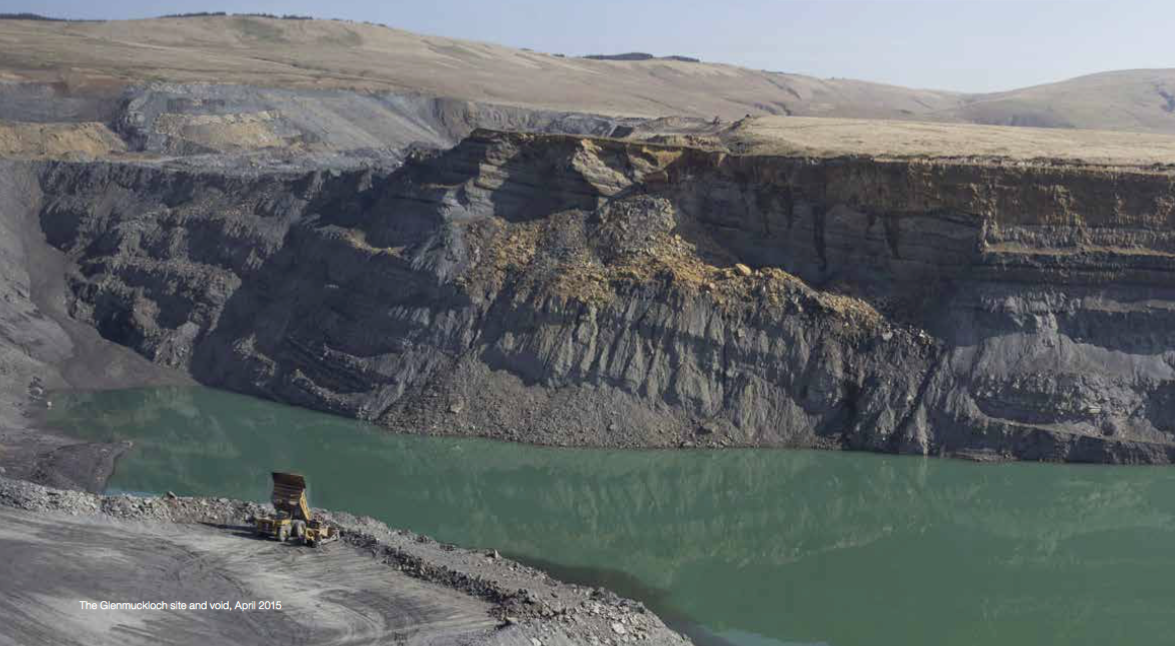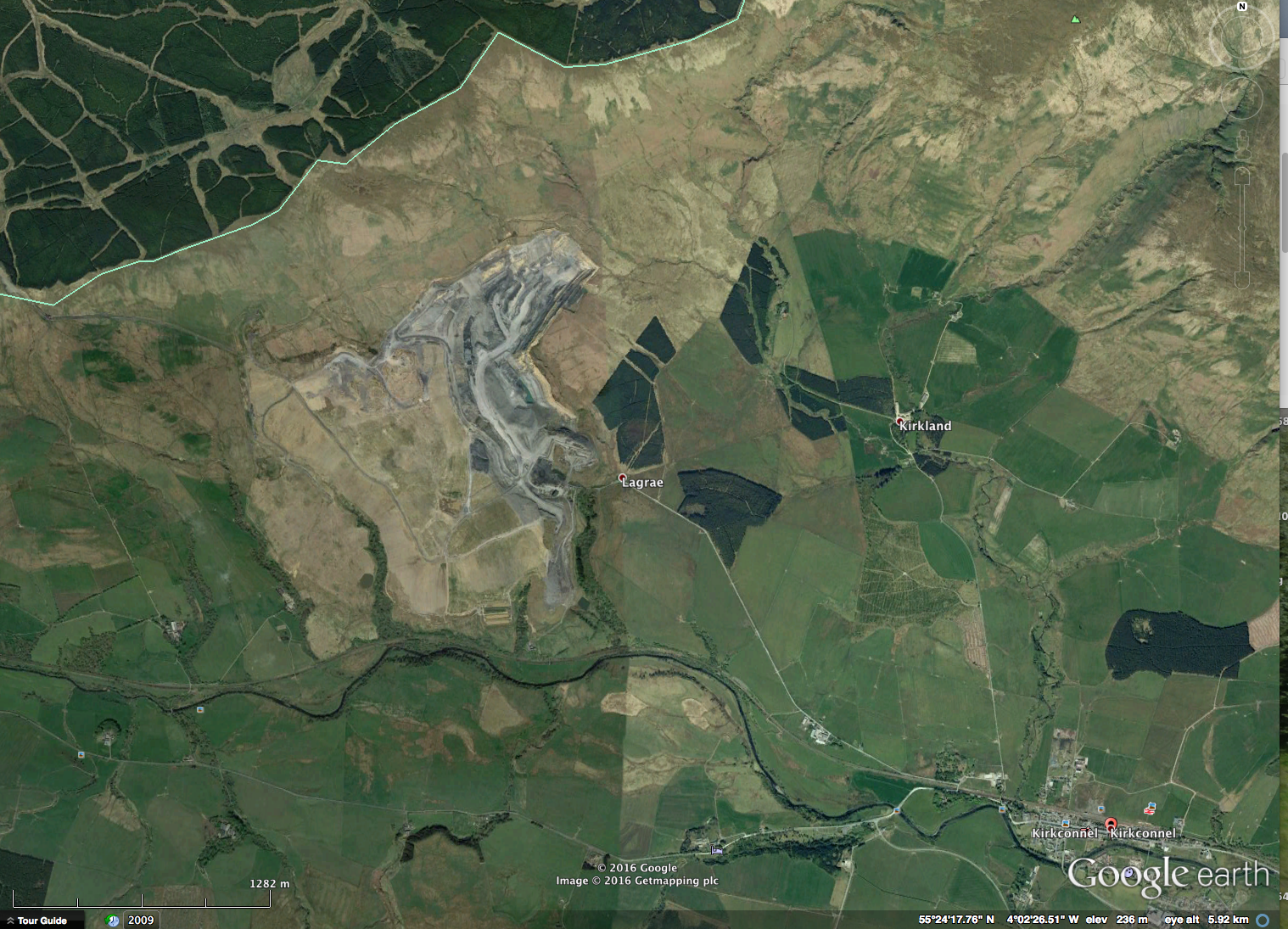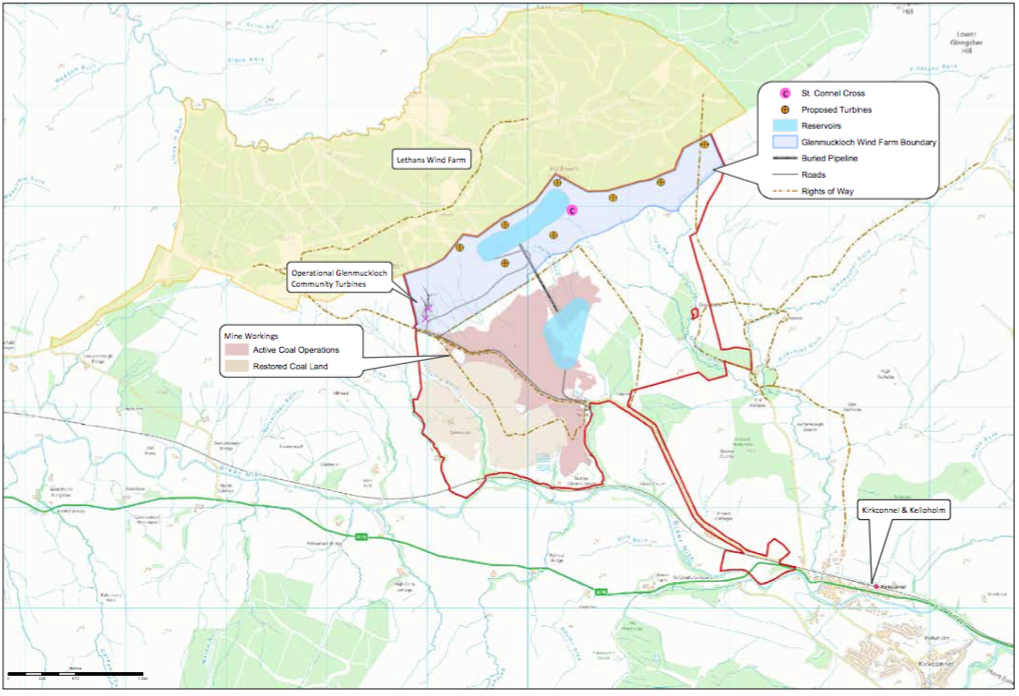Coal Mine Closure (Scotland): The Glenmuckloch Pumped Storage Hydro Scheme
Sources: Energy Matters, Daily Record and Energy Matters
Scotland is to get a new pumped storage hydro scheme, not in the Highlands but in the Scottish Borders. With a capacity of 400 MW and an estimated 1.7 GWh of storage this plant can make a meaningful 4 hour contribution to peak generation every day. But wooly arguments made about smoothing intermittent renewables makes it unclear if this commendable strategy is the intended use. Scotland is already home to several pumped-storage stations — notably the 300-MW Foyers and 440-MW Cruachan — though Glenmuckloch would be the first new such facility to be built in more than three decades, according to 2020 Renewables officials.
The project is being developed by a joint venture between Buccleuch Estates and 2020 Renewables known as Glenmuckloch Pumped Storage Hydro Ltd., which previously received endorsements from local authorities in July.

========
Ministers approve 400MW Glenmuckloch hydro scheme
The former opencast mine site currently operates as a surface mine, though the site is also currently undergoing an extensive restoration. The hydro project is part of a wider development, known as the Glenmuckloch Energy Park, where a windfarm is also proposed. The eight turbine proposal is still being considered by ministers and the council has raised objections to that part of the scheme.
Development of the Glenmuckloch pumped storage hydro (PSH) electricity generation station will support more than 320 construction jobs during the development stage and 15 new permanent jobs will be created once the power station is up and running.
Economy Secretary Keith Brown said: “Renewable energy sources generated more than 56 per cent of gross electricity consumption in Scotland in 2015, helping support our world-leading ambitions to become a low-carbon economy».
“The Scottish Government believes there is a huge opportunity around pumped storage hydro.
“This tried-and-tested technology can support peak demand and effectively store greater levels of electricity at times when renewable energy output is high but demand is low.”
Industry trade body Scottish Renewables welcomed the decision.
Project Overview
The Glenmuckloch pumped storage hydro scheme is to be owned and operated by Buccleuch, a company that owns and operates Estates in southern Scotland, in partnership with 2020 Renewables. The scheme is located on the site of a recently abandoned open cast coal mine, that will form the lower reservoir, and one of the objectives is to rehabilitate the land. The upper reservoir will be located on a high ridge above the mine. The high ridge will also host a new wind farm and the scheme therefore has much in common with the Gorona del Viento scheme on El Hierro that has been subject to exhaustive analysis by Roger Andrews and the Energy Matters readership.
This excellent presentation provides an overview and a handful of pictures from the presentation is the best way to describe the scheme:

Figure 1 The now disused Glenmuckloch open cast coal pit. In Scottish, glen=valley, muck=dirt and loch=lake. And since I cannot find a proper place that is actually called Glenmuckloch, I will speculate that this dirty pond is it. The lower reservoir will be located in this void. The upper reservoir on the grass covered ridge above, just in front of the barely visible trees.

Figure 2 What the site looks like on Google Earth. The pit is located close to the town of Kirkconnel. Note the grassy ridge to the N, backed by a forest, that will host the upper reservoir and a wind farm.
Figure 3 Map showing similar view to the GE image (Figure 2) and the locations of upper and lower reservoirs.
Figure 4 Detail of the site layout with locations of wind turbines around the upper reservoir.
Figure 5 Schematic of how the scheme will work. Left shows water draining from the upper to the lower reservoir, generating electricity. Right shows water being pumped up the hill into the upper reservoir, drawing electricity from the grid. As a rule of thumb schemes like this are about 90% efficient. That means it will generate just 90% of the power it consumes. So how does this work financially?
Key Statistics
The key statistics in the presentation are as follows:
- Generation capacity 400 MW
- Volume of water 3.3 million m^3
- Cost £150 million
Using Google Earth, calculates the upper reservoir is at 430 m and the lower at 230 m giving a fall of 200 m.
The conclusion of Euan Mearns is that operating at 400 MW, the reservoir can produce power for 4.5 hours. This is a very useful unit of energy to have that can be produced into the 6 pm ± 2 hours demand peak every day thus saving on 400 MW of fossil fuel peaking plants. So what’s not to like?
=========
Please visit: LinkedIn Group RENEWABLE ENERGY FOR MINING AND OIL INDUSTRY








